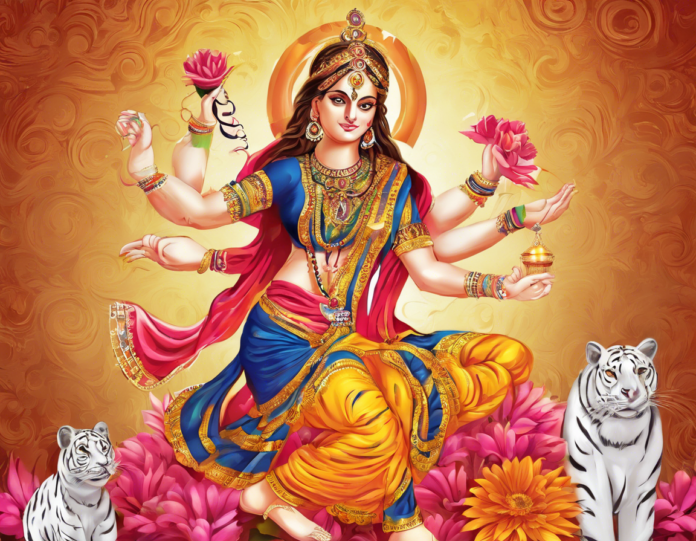Navratri is a vibrant and auspicious Hindu festival celebrated across India and by Hindu communities worldwide. The festival lasts for nine nights and is dedicated to the worship of different forms of the Goddess Durga. Each day of Navratri is associated with a specific form of the goddess, with the seventh day being dedicated to Goddess Kaalratri, the fiercest form of Durga.
The Significance of Day 7: Goddess Kaalratri
Goddess Kaalratri is believed to be the most violent form of Durga, as she is the destroyer of ignorance and darkness. She represents the power that destroys evil and protects her devotees from harm. Kaalratri is also known as Shubhankari, meaning the one who does good. She is symbolized with a dark complexion, unkempt hair, a shining sword in her hand, and a blessing mudra in her right hand.
Rituals and Celebrations on Day 7
Devotees worship Goddess Kaalratri with great fervor on the seventh day of Navratri. Special pujas, rituals, and offerings are made to seek her blessings for protection, strength, and courage. Many devotees observe a fast on this day and break it only after performing the evening aarti.
The Essence of Day 7: Overcoming Darkness
The seventh day of Navratri signifies the victory of good over evil, light over darkness, and knowledge over ignorance. It teaches us to be fearless in the face of challenges, to confront our inner demons, and to emerge stronger and wiser. Worshiping Goddess Kaalratri on this day reminds us to embrace change, let go of negativity, and move towards a brighter future.
Embracing the Spirit of Navratri
Navratri is not just a festival; it is a spiritual journey of self-discovery, inner transformation, and devotion. Each day of Navratri holds deep symbolic significance and offers profound lessons for devotees. By immersing ourselves in the festivities, prayers, and rituals of Navratri, we can connect with the divine energy of the goddess and experience joy, peace, and fulfillment.
FAQs (Frequently Asked Questions)
1. Why is Navratri celebrated for nine nights?
Navratri is celebrated for nine nights and ten days to honor the nine different forms of Goddess Durga. Each day is dedicated to a specific form of the goddess, and the tenth day, known as Vijayadashami or Dussehra, marks the triumph of good over evil.
2. What is the significance of fasting during Navratri?
Fasting during Navratri is believed to purify the body and soul, increase willpower, and invoke the blessings of the goddess. It is a way for devotees to show their dedication, discipline, and devotion to the divine.
3. How can one participate in Navratri celebrations?
One can participate in Navratri celebrations by visiting temples, attending community puja events, dancing the traditional Garba and Dandiya Raas, observing fasts, and decorating homes with lights and rangoli.
4. What is the significance of Garba and Dandiya Raas during Navratri?
Garba and Dandiya Raas are traditional folk dances that are performed during Navratri to honor Goddess Durga. They represent the celebration of life, the victory of good over evil, and the joy of the festival season.
5. How can one connect with the divine energy of Goddess Kaalratri on the seventh day of Navratri?
To connect with the divine energy of Goddess Kaalratri on the seventh day of Navratri, one can meditate on her form, recite her mantras and prayers, offer her flowers and incense, and cultivate qualities such as courage, strength, and fearlessness in their own life.

